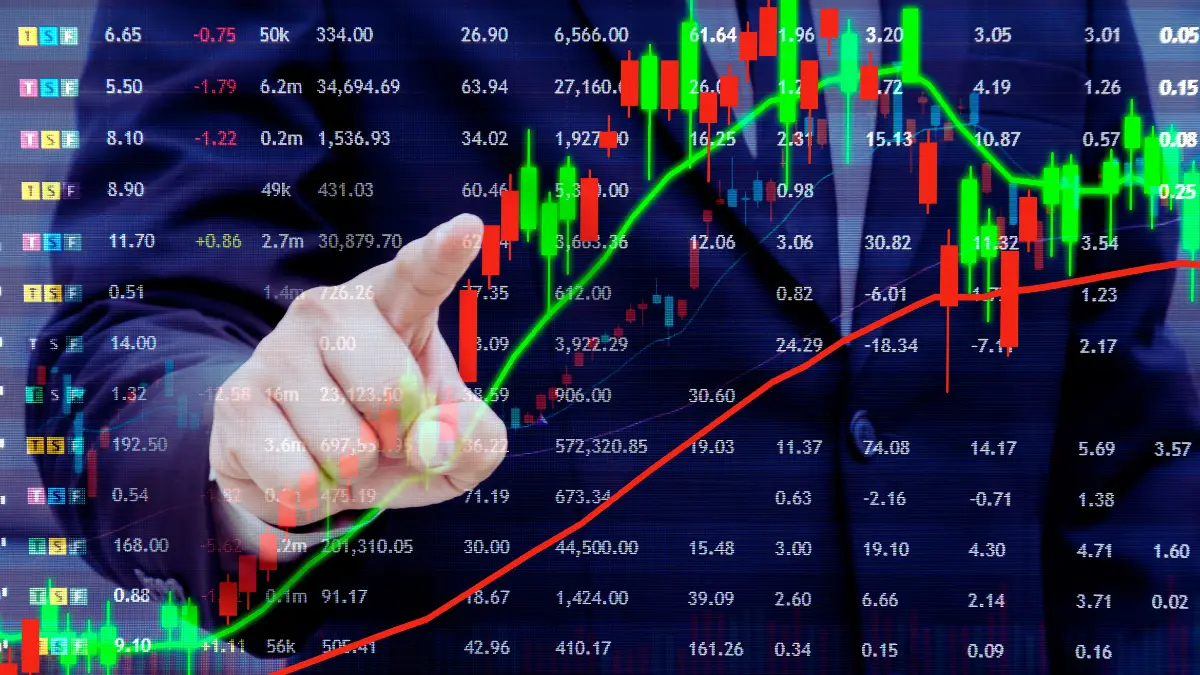Your brain betrays you every time you invest. Most people lose money not because markets are unpredictable, but because human psychology leads to the same mistakes being repeated.
While you second-guess yourself and chase trends, smart money profits from these predictable errors. Every emotional decision, every fear-driven sale, and every overconfident trade creates opportunities for those who understand behavioral patterns.
These nine psychological traps don’t have to cost you anymore. When you recognize how investor psychology creates mispricings, you can position yourself on the winning side of behavioral arbitrage and turn human nature into profit.
1. Overconfidence

Investors frequently overestimate their market knowledge and predictive abilities. This psychological trap leads people to believe they can outperform markets consistently.
Confident traders often ignore crucial warning signs while taking unnecessary risks.
Excessive self-assurance creates a dangerous feedback loop in investment decisions. Success breeds more confidence, which encourages bigger bets and riskier positions.
Many investors confuse luck with skill, especially during bull markets when rising tides lift most portfolios.
Transaction costs pile up when overconfident investors trade frequently. They underestimate market complexity while overestimating their edge against professional managers.
This bias destroys wealth through poor timing, inadequate diversification, and emotional decision-making that ignores fundamental analysis.
- Who Falls for It: Mid-career professionals, successful entrepreneurs, and active traders who mistake past wins for future predictive ability
- Additional Insight: Overconfidence peaks after recent gains, making investors most vulnerable during market uptrends when caution matters most
2. Anchoring

Purchase prices become psychological anchors that distort future investment decisions.
Investors cling to these reference points even when market conditions change dramatically. The original cost basis clouds judgment about current value and prospects.
Stock prices from 52-week highs also serve as powerful anchors. People expect shares to return to previous peaks regardless of changed fundamentals.
This mental fixation prevents objective analysis of new information that might suggest different fair values.
Anchoring slows portfolio adjustments and keeps investors trapped in deteriorating positions.
Breaking free requires conscious effort to evaluate investments based on current facts rather than historical prices. Smart money recognizes when anchoring creates opportunities to buy quality assets at discounted prices.
- Who Falls for It: Novice investors and those emotionally attached to specific purchase prices or memorable market highs
- Additional Insight: Setting predetermined exit rules before buying helps overcome anchoring bias by removing emotional attachment to entry prices
3. Mental Accounting

People treat money differently depending on its source or intended purpose. Windfall gains often get invested more aggressively than earned income.
This irrational separation ignores the basic principle that all money has equal value regardless of origin.
Investors might gamble with tax refunds while being extremely conservative with retirement savings.
They create mental buckets that lead to suboptimal allocation decisions. Emergency funds might earn minimal interest while credit card debt accumulates at high rates.
Tax considerations further complicate mental accounting as investors avoid realizing losses for psychological reasons. They would rather hold declining stocks than admit mistakes and capture tax benefits.
This compartmentalized thinking prevents holistic wealth management and creates inefficient portfolio structures.
- Who Falls for It: Household investors managing multiple financial goals and those who segregate money into different mental categories
- Additional Insight: Viewing total wealth as one unified pool rather than separate accounts leads to better allocation decisions and tax efficiency
4. Herd Behavior

Social psychology drives investors to follow crowd movements without independent analysis. Fear of missing out combines with safety in numbers to create powerful momentum.
People assume that widespread agreement indicates correctness, especially during market extremes.
Mass participation amplifies price movements beyond rational levels. Everyone buying pushes prices higher, attracting more buyers in self-reinforcing cycles.
Bubbles form when herd mentality overwhelms fundamental analysis and risk assessment.
Crashes happen when herds reverse direction simultaneously. Panic selling creates opportunities for contrarian investors who maintain discipline during chaos.
Understanding crowd psychology helps identify when markets disconnect from underlying values.
- Who Falls for It: Retail investors, market newcomers, and even professionals during extreme market conditions when social pressure intensifies
- Additional Insight: Contrarian strategies work best when combined with strong conviction and patience to withstand continued crowd pressure
5. Gambler’s Fallacy

Sequential outcomes create false patterns in random events. Investors believe that losing streaks must end soon, leading to poorly timed contrarian bets.
Each market day remains independent despite recent price movements appearing to suggest trends.
Hot streaks also trigger this fallacy as people expect reversals after extended runs. The belief that markets are “due” for changes ignores statistical independence.
Random walks don’t have memory, making pattern-based predictions unreliable for timing decisions.
Amin et al. (2009) documented this bias in financial markets, showing how investors consistently expect reversals after price sequences.
Their research revealed systematic errors in judgment that create predictable trading patterns. These mistakes provide opportunities for disciplined investors who understand randomness.
- Who Falls for It: Inexperienced traders and those unfamiliar with probability theory, particularly active in volatile short-term markets
- Additional Insight: Recognizing market randomness helps avoid chasing trends and improves focus on long-term fundamental analysis rather than short-term patterns
6. Overreaction and Availability Bias

Recent dramatic events dominate investment thinking more than they should. Spectacular crashes or rallies become easily recalled examples that distort probability assessment.
Media coverage amplifies this effect by repeatedly highlighting memorable market moments.
Availability bias causes systematic mispricing as investors extrapolate from limited, vivid examples.
Company scandals create excessive pessimism while success stories generate unrealistic optimism. Current news cycles overshadow longer-term trends and historical context.
Markets swing too far in both directions when emotions overwhelm analysis. Fearful selling after bad news creates bargains for patient buyers.
Euphoric buying after good news creates overvaluation that smart money can exploit through careful timing and contrarian positioning.
- Who Falls for It: Investors heavily influenced by financial media, social networks, and those with strong emotional reactions to market volatility
- Additional Insight: Maintaining a historical perspective and focusing on long-term fundamentals helps filter out noise from sensational but temporary market events
7. Framing Effect

Information presentation strongly influences investment decisions beyond actual content. Risk descriptions using percentages versus dollar amounts trigger different responses.
Positive framing (“90% success rate”) generates more enthusiasm than negative framing (“10% failure rate”) for identical outcomes.
Marketing materials exploit framing through selective data presentation and time frame choices. Past performance charts highlight favorable periods while downplaying drawdowns.
Fee structures get presented in ways that minimize perceived costs while emphasizing benefits.
Context manipulation affects even sophisticated investors who should recognize these tactics. Investment committees make different choices when proposals emphasize growth versus stability.
Awareness of framing techniques improves decision quality by focusing attention on underlying facts rather than presentation style.
- Who Falls for It: Most investors fall victim to framing effects, especially those unaware of how presentation influences perception
- Additional Insight: Consciously reframing information in multiple ways before making decisions helps reveal hidden biases and improves analytical objectivity
8. Disposition Effect

Winning positions get sold too quickly, while losing investments linger too long in portfolios. This systematic pattern stems from reluctance to realize losses and eagerness to lock in gains.
Emotional discomfort from admitting mistakes overrides rational portfolio management.
Tax implications compound this problem as investors avoid harvesting losses that could reduce tax burdens.
Pride and regret influence holding periods more than fundamental analysis or strategic rebalancing needs. Portfolio efficiency suffers when emotions drive buy and sell decisions.
Ghosh, Gong, and Zhang (2025) studied cryptocurrency markets and confirmed disposition effects even among sophisticated arbitrageurs.
Their research showed that disciplined professional investors still struggle with this bias, though less severely than retail participants. Education and systematic processes help mitigate emotional decision-making.
- Who Falls for It: Retail investors with strong emotional attachments to specific positions and those lacking systematic selling disciplines
- Additional Insight: Predetermined rebalancing schedules and automated selling rules help overcome emotional resistance to realizing losses and taking profits
9. Excessive Trading (Turnover)

Frequent trading typically reduces returns through transaction costs and poor timing. Overconfident investors believe they can profit from short-term price movements.
The illusion of control encourages active management even when passive strategies perform better over time.
Brokerage costs, bid-ask spreads, and market impact accumulate quickly with high turnover.
Taxes on realized gains further erode performance for taxable accounts. Lower trading frequency correlates with higher net returns for individual investors.
Action bias drives unnecessary portfolio changes when patience would serve better. Investors feel compelled to “do something” during market volatility rather than maintain discipline.
This behavioral tendency enriches brokers while impoverishing clients through reduced compound growth over long periods.
- Who Falls for It: Active traders, overconfident beginners, and investors who feel anxious during periods of market inactivity
- Additional Insight: Setting annual trading limits and measuring performance net of all costs helps combat the urge for excessive portfolio turnover

